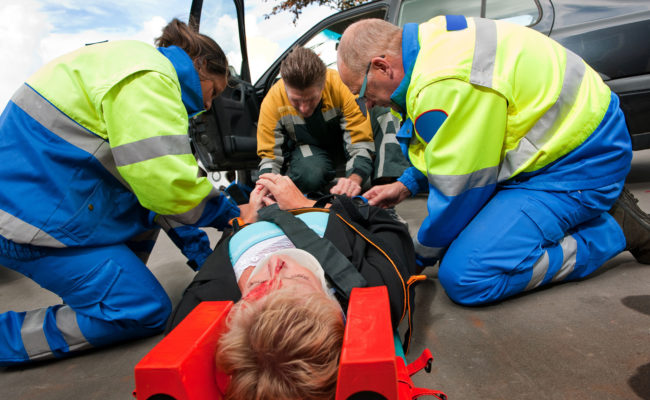Introduction
In today's fast-paced workplace, ensuring the safety and security and wellness of your labor force is critical. One element that usually gets overlooked is hands-on handling, which describes the procedure of lifting, carrying, pushing, or drawing objects. In this write-up, we will certainly discover reliable manual handling methods that can aid maintain your labor force safe and healthy and balanced. We will http://shanectge128.lucialpiazzale.com/comprehending-the-fundamentals-of-corporate-first-aid-training-programs certainly additionally talk about the relevance of emergency treatment training, including CPR training and mental health emergency treatment, and how these elements contribute to a more secure job environment.

Manual Handling Techniques: Keeping Your Workforce Safe and Healthy
Manual handling strategies are essential for avoiding injuries in the workplace. Inappropriate lifting techniques can result in musculoskeletal problems (MSDs), which make up a significant variety of workplace injuries. To properly reduce risks associated with hands-on handling, companies have to apply training programs that stress proper techniques.
Understanding Handbook Handling Risks
Before diving into specific techniques, it's vital to identify the risks involved in hands-on handling jobs. According to study, poor lifting techniques can lead to:
- Back pain Muscle strains Joint injuries Chronic conditions impacting mobility
Recognizing these dangers permits companies and employees alike to prioritize safety.
The Value of Training
Training plays an essential role in minimizing hands-on handling-related injuries. It's not nearly recognizing exactly how to raise appropriately; it's additionally regarding recognizing body technicians and ergonomics. A thorough manual handling training training course must cover:
- Proper lifting techniques Risk analysis skills Use of devices like carts or forklifts
Additionally, including first help courses right into office training makes certain that every person recognizes just how to react efficiently in situation of an injury.
Basic Raising Techniques
Here are some foundational techniques that everyone ought to understand:
1. Assess the Load
- Before training anything, constantly assess its weight and shape. If it seems also hefty or awkwardly formed, seek aid or usage mechanical aids.
2. Positioning
- Stand near the object. Place your feet shoulder-width apart for balance. Bend your knees while keeping your back straight.
3. Grip
- Ensure a firm hold on the object. Use both hands when possible.
4. Lifting
- Lift with your legs rather than your back. Keep the things near your body as you stand up.
5. Carrying
- Maintain a steady pose while walking. Avoid turning your body; rather, transform your whole body by relocating your feet.
6. Setting Down
- Lower the object by bending at the knees again. Ensure that you position it down carefully without dropping it.
Using Tools for Hands-on Handling
Investing in devices created for hand-operated handling can dramatically reduce injury threat. Right here's a list of typically used tools:

|Equipment Kind|Purpose|| ----------------|--------------------------------------|| Trolleys|For transferring hefty items|| Raises|For raising individuals or hefty things|| Pallet Jacks|For moving palletized loads|
Incorporating Emergency treatment Training
While minimizing risks via correct hands-on handling is important, being prepared for emergencies is similarly important. This is where first aid training comes into play.
Types of Emergency treatment Courses Available
General Work environment First Aid
- Covers basic emergency treatment skills required in various job environments.
CPR Training
- Teaches lifesaving cardiopulmonary resuscitation techniques necessary during cardiac emergencies.
Corporate First Aid Training
- Tailored programs specifically designed for corporate environments focusing on common work environment injuries.
Mental Wellness First Aid
- Provides skills to help coworkers fighting with mental wellness problems-- an essential component typically neglected in conventional first aid courses.
Childcare Emergency treatment Course
- Focuses on reacting to emergency situations entailing kids-- perfect for those working in instructional settings or child care centers.
Online First Aid Course
- Offers adaptability for workers to discover at their own pace while still covering all required content.
Creating a Culture of Safety
To maintain an atmosphere conducive to safety, growing a culture where staff members really feel encouraged to speak up concerning dangers is essential.

1. Encourage Open Communication
Encourage workers to report unsafe problems without fear of retaliation; this fosters an open discussion concerning possible threats connected with manual handling tasks.
2. Regular Training Sessions
Hold routine workshops on hands-on handling techniques and refresher courses on emergency treatment courses-- keeping abilities sharp makes sure readiness throughout emergencies.
3. Promote Mental Well-being
Since mental health plays a vital role in general wellness, employers must advertise psychological health and wellness recognition together with physical security measures.
FAQs
Q1: What are the indicators that I require manual managing training?
A1: If staff members frequently raise hefty products or report pain after lifting jobs, it's time for extensive manual handling training sessions.
Q2: Just how frequently need to we conduct emergency treatment training?
A2: Preferably, emergency treatment training should take place yearly; nevertheless, more frequent sessions might be helpful based on office risks or changes in staff.
Q3: Can online courses be as efficient as classroom-based training?
A3: Yes! On the internet programs have come to be significantly interactive and give important sources-- just ensure they meet certification requirements!
Q4: What kind of tools should our workplace spend in?
A4: Invest in carts, lifts, pallet jacks, Emergency response training and ergonomic furnishings-- these tools assist decrease injury from inappropriate hands-on handling practices.
Conclusion
In final thought, mastering proper hands-on handling strategies is essential for promoting a safe and healthy and balanced labor force environment. By prioritizing extensive training-- including essential subjects like first aid courses-- you empower staff members with understanding vital for both avoidance and feedback during emergencies like mishaps associated with mishandled loads.
Remember: Security isn't just a policy; it's a culture constructed through constant initiative from every individual within an organization!
By supplying reliable manuals on these methods while emphasizing continual finding out through accreditations such as mouth-to-mouth resuscitation or Mental Health Emergency Treatment Courses-- business can develop offices where safety thrives!